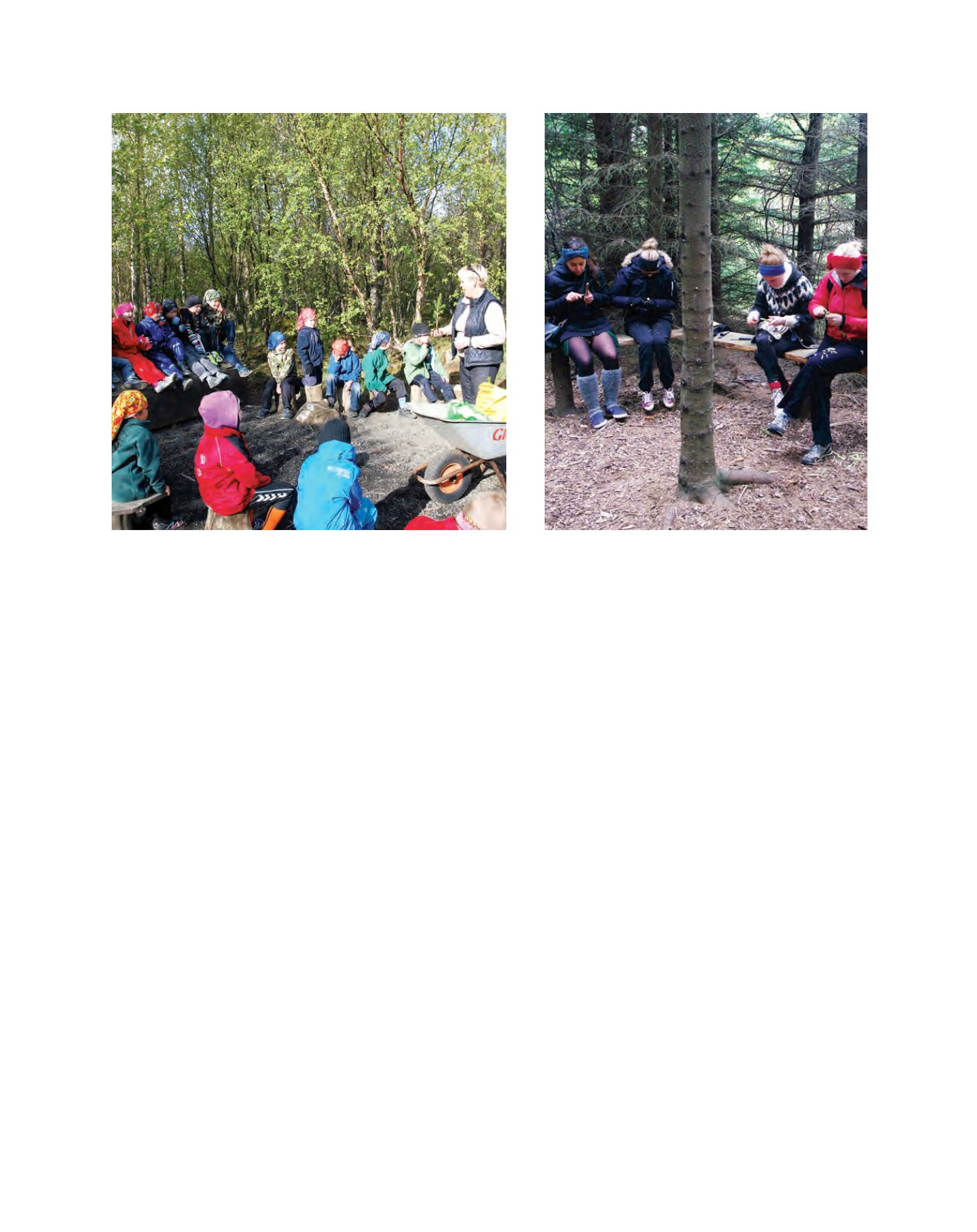

[
] 307
needs and they are encouraged to share their modifications with
other teachers, leading to project evolution and proliferation.
For some time, the Forest Service has aimed to post descrip-
tions of these learning projects on a website, making them easily
available to a larger number of teachers. This has however proved
difficult due to the rapid development and proliferation of projects.
A website will hopefully be set up soon, but the difficulty of doing so
now is actually a very good sign, as it means that the LIS programme
is alive and growing.
LIS in the curriculum
Schools that participate in the LIS programme incorporate outdoor
learning in the forest into their curricula, not as a subject, but rather
as an interdisciplinary part of the learning process. Many connect it
strongly to learning about sustainable development. LIS also helps to
achieve many of the goals set in the general curriculum for Icelandic
schools by providing diversity in learning. This includes meeting the
needs of individuals, improving well-being, providing interdiscipli-
nary learning and promoting equality and inclusiveness.
Just as a growing tree sends branches in all directions, the LIS
programme has also developed offshoot projects. A particularly
successful one identified pupils (aged 14-15) who showed behav-
ioural problems in the classroom setting and gave them more time
and especially more responsibility in the forest. Taking them out
of the classroom for two hours per week and letting them work
on improvements to the forest under the guidance of a forester or
horticulturist improved their attitude in general and even improved
their regular school work in some cases.
Preschools are increasingly using forests for outings and some
now participate in LIS and have their own ‘neighbourwoods’. Among
the things children learn is how to climb a tree safely. Senior citizens
often volunteer to work with children in preschools and, in some
cases, in primary schools. The forest has turned out to
be an excellent venue for bridging the generation gap
and is beneficial to both young and old.
Ten years young
The LIS programme is now ten years old, but is in rapid
development and is still considered a development
project by the Iceland Forest Service. Early emphasis
on modifying the forest, building shelters and benches
to create a teaching environment, has been replaced by
an emphasis on the forest as a learning environment
and on leaving it the way it was found. Management
plans are being made for some of the forests and
should be helpful in increasing their potential use in
learning. Research is under way to gauge the effects
of participation in LIS on important aspects such as
academic achievement, pupil and teacher satisfaction,
interdisciplinary learning and effectiveness in meeting
individual needs.
Feedback from teachers on the success of the LIS
programme has been very positive. It is clear that some
pupils benefit greatly from an outdoor learning environ-
ment and many benefit from the diversity in learning
that the forest provides. Baking bread on a stick over
a fire is fun and interesting. Learning to build a safe
campfire is both exciting and important. Calculating the
volume of a tree teaches geometry in a way that is actu-
ally satisfying to the pupils’ curiosity. Finding out how
much carbon a tree has sequestered connects geometry
to sustainable development and climate change. The list
of ways in which the forest can be used in education is
practically endless.
Pupils benefit greatlly from an outdoor learning environment and the diversity in learning that the forest provides
















